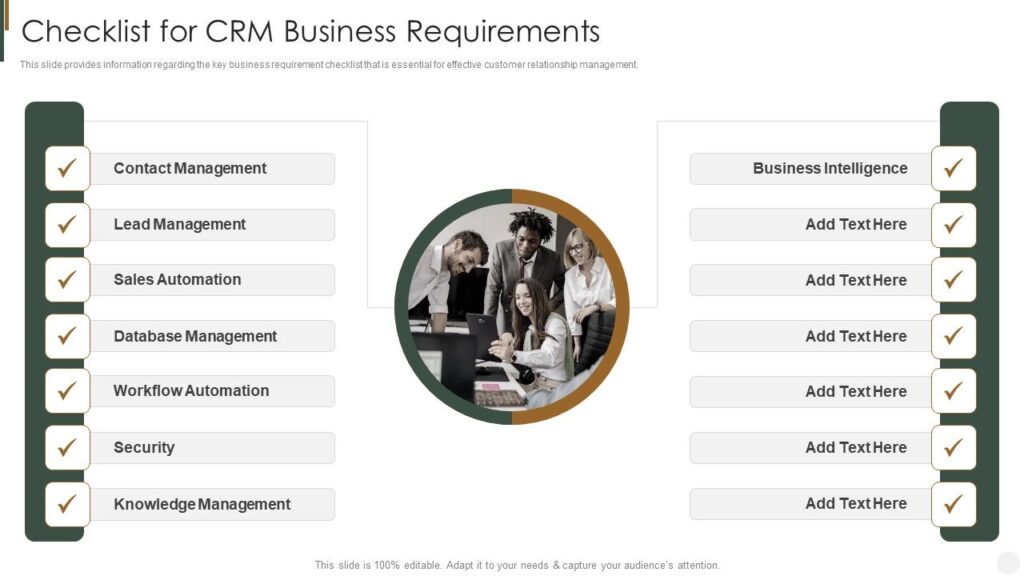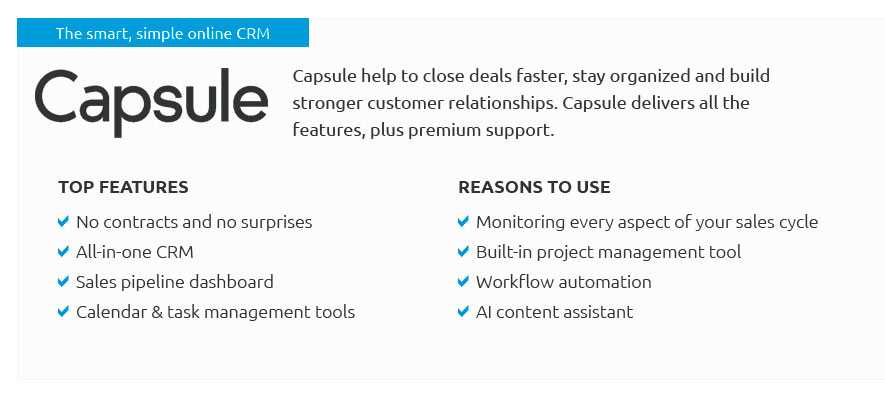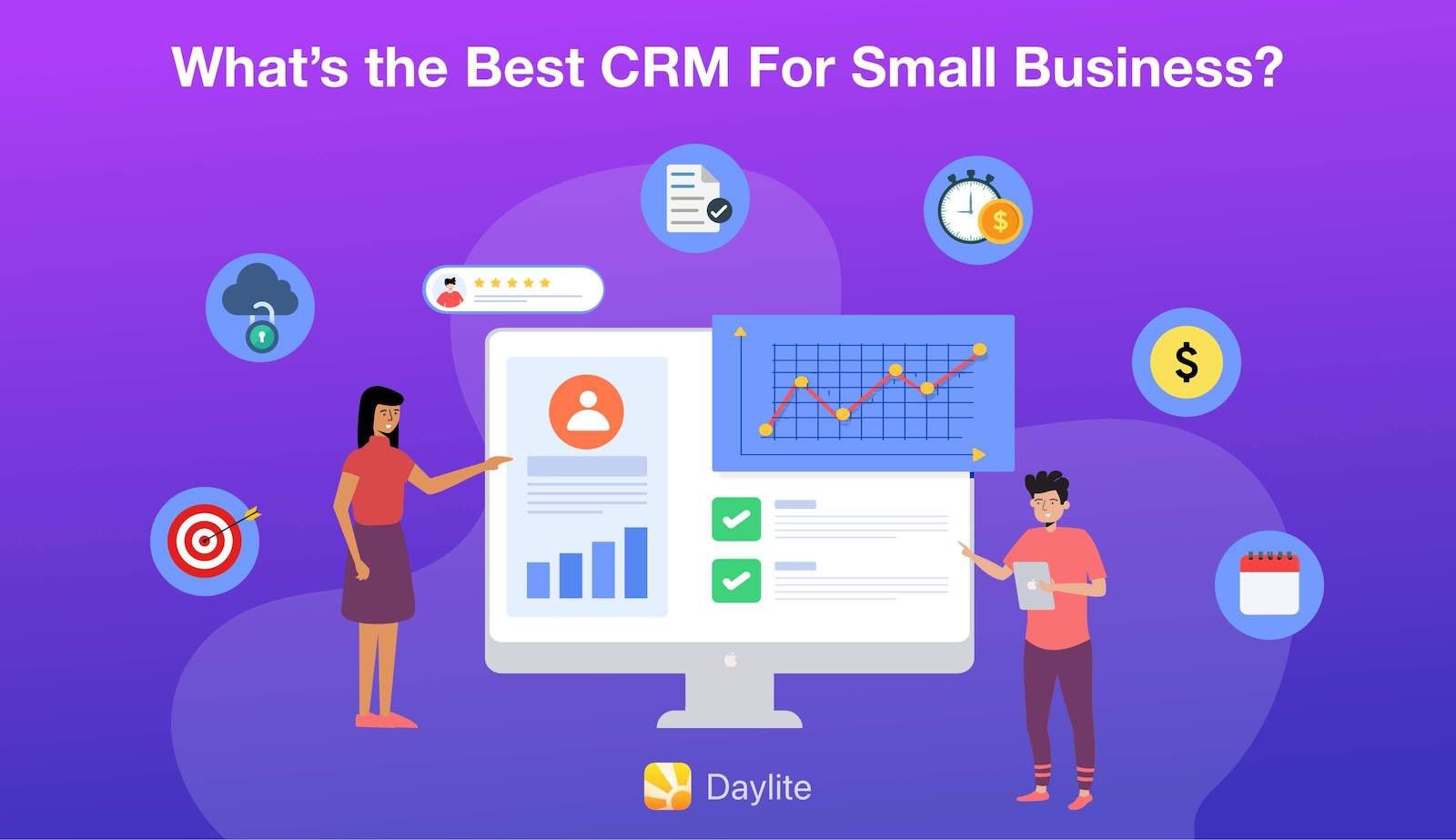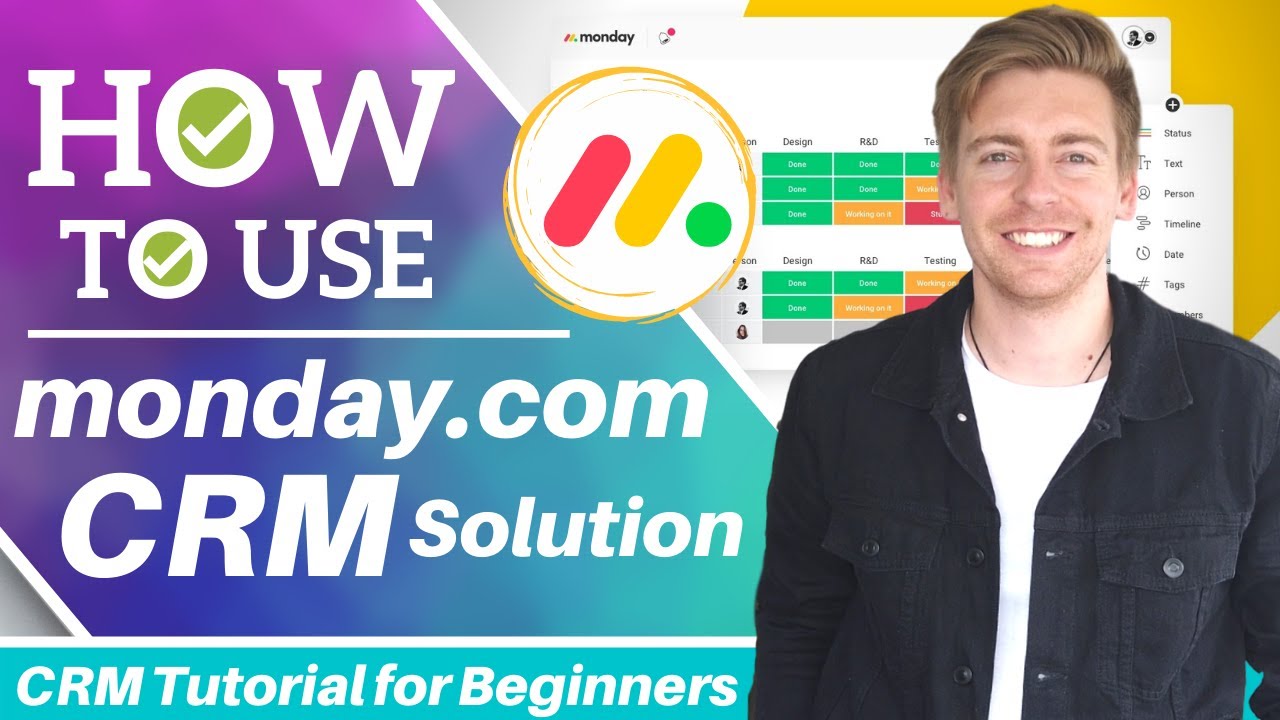
The Ultimate Small Business CRM Checklist: Your Guide to Choosing, Implementing, and Thriving
Running a small business is a whirlwind. You’re juggling a million things – from product development and marketing to customer service and, of course, keeping the lights on. In the midst of all this chaos, it’s easy for crucial details to slip through the cracks, especially when it comes to managing your customer relationships. That’s where a Customer Relationship Management (CRM) system comes in. It’s not just a fancy piece of software; it’s the backbone of a successful, customer-centric business. But where do you even begin? This comprehensive CRM checklist is your roadmap to navigating the world of CRM for small businesses. We’ll break down everything from choosing the right CRM to ensuring a smooth implementation and, finally, how to harness its power to grow your business.
Why Your Small Business Needs a CRM
Before we dive into the checklist, let’s quickly address the “why.” Why should you, as a small business owner, invest time and resources in a CRM? The answer is simple: it boosts your bottom line. Here’s how:
- Improved Customer Relationships: A CRM gives you a 360-degree view of your customers. You’ll know their purchase history, communication preferences, and any specific needs or issues. This allows you to personalize interactions and provide exceptional service, fostering loyalty and repeat business.
- Increased Sales: By tracking leads, managing your sales pipeline, and automating follow-ups, a CRM helps you close more deals. You can identify which leads are most likely to convert and focus your efforts accordingly.
- Enhanced Efficiency: A CRM automates repetitive tasks like data entry and email sending, freeing up your team to focus on more strategic activities. This boosts productivity and reduces the risk of human error.
- Better Data Insights: A CRM provides valuable data about your customers and your sales processes. You can use these insights to make informed decisions about your marketing campaigns, product development, and overall business strategy.
- Scalability: As your business grows, a CRM can scale with you. It can handle increasing numbers of customers, leads, and transactions, ensuring that you don’t outgrow your system.
Now that you understand the benefits, let’s get to the good stuff: the CRM checklist!
Phase 1: Assessing Your Needs and Defining Your Goals
Before you even start looking at CRM software, you need to understand your own business. This initial phase is critical because it lays the foundation for a successful CRM implementation. Skipping this step is like building a house without a blueprint – you’re likely to end up with something that doesn’t quite fit your needs.
1. Identify Your Business Goals
What do you want to achieve with a CRM? Are you looking to increase sales, improve customer retention, streamline your marketing efforts, or something else? Be specific. For example, instead of saying “increase sales,” aim for “increase sales by 15% within the next year.” Clearly defined goals will help you choose the right CRM features and measure your success.
- Example Goals:
- Increase lead conversion rates by 20%
- Improve customer satisfaction scores by 10%
- Reduce customer churn by 5%
- Improve sales team productivity by 15%
2. Analyze Your Current Customer Processes
How do you currently manage customer interactions? Map out your existing processes, from lead generation to customer service. Identify any pain points, inefficiencies, or areas where information gets lost. This analysis will reveal the specific features you need in a CRM.
- Questions to Ask:
- How do you track leads and prospects?
- How do you communicate with customers (email, phone, etc.)?
- How do you handle customer inquiries and support requests?
- How do you manage your sales pipeline?
3. Define Your Target Audience
Who are your ideal customers? Understanding your target audience helps you tailor your CRM strategy and choose features that align with their needs. Consider their demographics, buying behaviors, and communication preferences.
- Considerations:
- What are their pain points?
- What are their preferred communication channels?
- What are their buying habits?
4. Determine Your Budget
CRM software comes in a variety of price points, from free options to enterprise-level solutions. Set a realistic budget that includes the cost of the software, implementation, training, and ongoing maintenance. Remember to factor in the long-term costs, not just the initial price tag.
- Budget Components:
- Software subscription fees
- Implementation costs (e.g., data migration, customization)
- Training for your team
- Ongoing support and maintenance
Phase 2: Researching and Selecting the Right CRM
Now that you know what you need, it’s time to find the right CRM. This phase involves researching different options, comparing features, and ultimately choosing the system that best fits your business.
5. Research CRM Software Options
There’s a vast landscape of CRM software available. Start by researching the leading vendors and exploring their features. Read reviews, compare pricing, and look for options that cater specifically to small businesses. Consider both cloud-based (SaaS) and on-premise solutions, weighing the pros and cons of each.
- Popular CRM Software for Small Businesses:
- HubSpot CRM
- Zoho CRM
- Salesforce Essentials
- Pipedrive
- Freshsales
6. Evaluate Key Features
Based on your needs assessment, identify the essential features you require. Focus on the features that will directly address your pain points and help you achieve your goals. Don’t get caught up in bells and whistles that you don’t need.
- Essential Features:
- Contact Management: Centralized storage of customer information, including contact details, communication history, and purchase history.
- Lead Management: Tracking leads through the sales pipeline, from initial contact to conversion.
- Sales Automation: Automating repetitive tasks like email follow-ups, task creation, and appointment scheduling.
- Reporting and Analytics: Generating reports and dashboards to track key metrics and gain insights into your sales and marketing performance.
- Integration: Ability to integrate with other tools you use, such as email marketing platforms, social media channels, and accounting software.
- Customer Support: Features for managing customer inquiries, resolving issues, and providing support.
7. Consider Scalability and Customization
Choose a CRM that can grow with your business. Ensure it can handle an increasing number of users, data, and transactions. Also, consider the level of customization offered. Can you tailor the CRM to fit your specific business processes? Can you add custom fields, workflows, and reports?
8. Assess User-Friendliness and Ease of Use
The best CRM is useless if your team doesn’t use it. Look for a system with a user-friendly interface that’s easy to navigate and understand. Consider the learning curve and the level of training required. A CRM that’s intuitive and easy to use will encourage adoption and maximize its effectiveness.
9. Evaluate Customer Support and Training Resources
When you encounter problems or have questions, you’ll need access to reliable customer support. Check the vendor’s support options, such as online documentation, tutorials, phone support, and email support. Also, consider the availability of training resources to help your team get up to speed quickly.
10. Request Demos and Free Trials
Before making a final decision, request demos from your top CRM contenders. This will allow you to see the software in action and assess its features firsthand. Take advantage of free trials to test the CRM with your own data and see how it fits your workflow.
Phase 3: Implementing Your CRM
Choosing a CRM is only the first step. Successful implementation is crucial to realizing its benefits. This phase involves setting up the system, migrating your data, training your team, and integrating it with your existing tools.
11. Plan Your Implementation Strategy
Develop a detailed implementation plan that outlines the steps involved, the timeline, and the resources required. This plan should include data migration, customization, user training, and integration with other systems. Designate a project manager to oversee the implementation process.
12. Migrate Your Data
Transferring your existing customer data into the CRM is a critical step. Clean and organize your data before migration to ensure accuracy. Choose the appropriate data migration method (manual import, automated import, or third-party tools) based on the volume and format of your data.
- Data Migration Tips:
- Clean and deduplicate your data.
- Map your data fields to the CRM fields.
- Test the data import process before migrating all of your data.
13. Customize Your CRM
Tailor the CRM to fit your specific business needs. This may involve creating custom fields, workflows, reports, and dashboards. Take advantage of the CRM’s customization options to streamline your processes and gain valuable insights.
14. Train Your Team
Provide comprehensive training to your team on how to use the CRM. This should cover all the features they’ll need to use, from data entry to reporting. Offer ongoing training and support to ensure that your team is comfortable and proficient with the system.
- Training Tips:
- Create training materials (e.g., user guides, videos).
- Provide hands-on training sessions.
- Offer ongoing support and refresher courses.
15. Integrate with Other Tools
Integrate your CRM with other tools you use, such as email marketing platforms, social media channels, and accounting software. This will streamline your workflow and provide a more complete view of your customers.
16. Test and Refine
Before going live, thoroughly test the CRM to ensure it functions correctly and meets your needs. Identify any issues and make adjustments as needed. After launch, continuously monitor your CRM usage and make refinements to optimize its performance.
Phase 4: Optimizing and Leveraging Your CRM
Once your CRM is up and running, the real work begins. This phase involves using the system to its full potential, analyzing data, and continuously improving your customer relationships and sales processes.
17. Encourage CRM Adoption
Ensure that your team actively uses the CRM. Make it a core part of your daily workflow. Emphasize the benefits of using the CRM and provide incentives to encourage adoption. Lead by example and demonstrate how the CRM can improve their productivity and make their jobs easier.
18. Track Key Metrics
Monitor key performance indicators (KPIs) to measure the effectiveness of your CRM. Track metrics such as lead conversion rates, sales cycle length, customer satisfaction scores, and customer churn. Use these insights to identify areas for improvement and optimize your CRM strategy.
- Key Metrics to Track:
- Lead conversion rate
- Sales cycle length
- Customer acquisition cost
- Customer lifetime value
- Customer satisfaction score
19. Analyze Data and Generate Reports
Regularly analyze the data in your CRM to gain insights into your customers, sales processes, and marketing campaigns. Generate reports to track your progress towards your goals and identify areas where you can improve. Use the data to make informed decisions about your business strategy.
20. Automate Workflows
Leverage the CRM’s automation features to streamline your workflows and save time. Automate tasks such as lead assignment, email follow-ups, and task creation. Automation can free up your team to focus on more strategic activities and improve efficiency.
21. Personalize Customer Interactions
Use the data in your CRM to personalize your interactions with customers. Tailor your messaging, offers, and service to their individual needs and preferences. Personalization can improve customer engagement, build loyalty, and increase sales.
22. Continuously Improve
CRM is not a set-it-and-forget-it solution. Continuously evaluate your CRM usage, identify areas for improvement, and make adjustments as needed. Stay up-to-date on the latest CRM features and best practices to maximize its effectiveness. Regularly review your goals and make sure your CRM strategy aligns with your evolving business needs.
Conclusion: Your CRM Journey Begins Now
Implementing a CRM is a significant step for any small business, but the benefits are undeniable. By following this checklist, you’ll be well on your way to choosing the right CRM, implementing it successfully, and leveraging its power to grow your business. Remember that the journey doesn’t end with implementation; it’s a continuous process of optimization and improvement. Embrace the power of CRM, and watch your business thrive!
Good luck, and happy CRM-ing!


